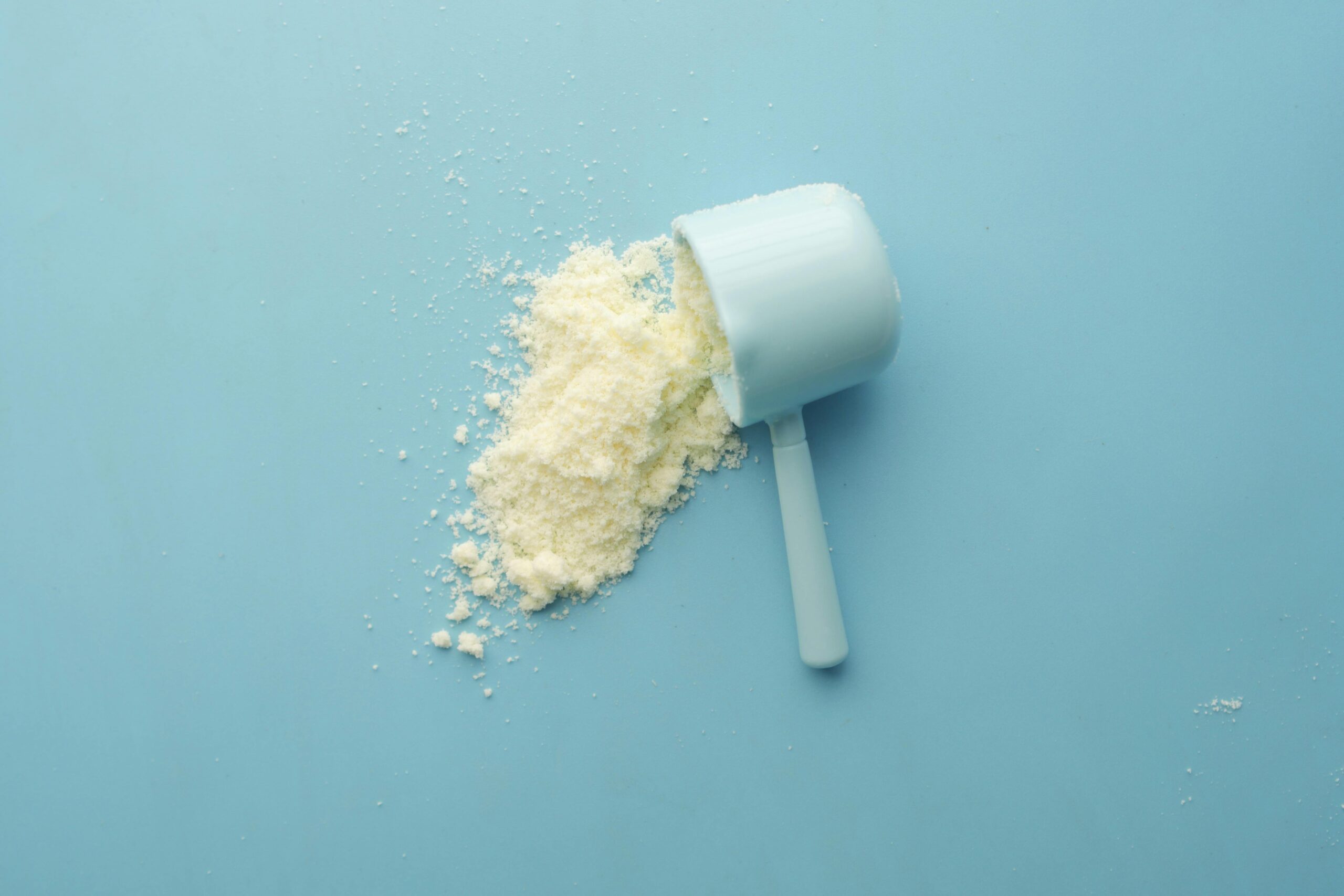Once upon a time in what now feels almost like a different life I lived on a little “hobby farm” with my ex-boyfriend.
It was amazing.
It was also tough because the reality is to create and maintain what we did required daily hard work, not to mention the fact that the entire time I struggled with anorexia nervosa and excessive exercise. However, ultimately for that time I was and still am ridiculously grateful because the land and that way of life was a kind of paradise for which I have no words.
Together we created an enormous vegetable garden and fruit orchard both of which we filled to the brim with the most unusual and exotic fruits and vegetables we could source (as well as some pretty “normal” but delicious ones such as oranges and bananas).
To say I loved that way of living, the dirt almost permanently under my fingernails, barefoot, often unclothed in the sunshine and always some shoot, bud or blossom to marvel the appearance or progress of, is an understatement.
I remember driving back from uni or work and feeling the excitement welling as I wound my way up the dirt road that lead to this sanctuary I knew as home.
I found endless joy within the things I got to do and create (even the large amount of time I don’t care to calculate I have spent collecting cow poo).
I was outside more than I was inside, and as close to life as a human being can get, only coming inside at the end of the day to wash, cook mixes of foods fresh from the earth and which we’d watered and tendered for months or years, peel borlotti beans, chia seeds or pigeon peas, listen to podcasts, read and re-read our old Encyclopedia collection and talk about the weather, how the bees, ducks and cows were handling the heat or the rain, what was growing well, what wasn’t and what we could do to make it all more happy and lush tomorrow.
One of my favourite activities was perusing the latest seed catalogue or searching plants on obscure Nursery websites and placing our orders for the strangest and most interesting fruits and vegetables available (purple asparagus, tomatillos, achacha and peanutbutter tree to name just four out of the hundreds we grew).
Later when I travelled South and Central America, Mexico and the Caribbean one of my top delights was walking the backstreets of local markets seeking out and tasting the oddest fruits and vegetables I could find. The diverse array of fruits and vegetables available which I had never even so much as heard of despite my extensive and intentional search for the weirdest fruits and vegetables to grow in Australia was mindboggling.
Which got me thinking that in our everyday lives we often don’t have access to even a small fraction of the vast array of fruits and vegetables that exist but we do have access to some a little out of the usual or some which are only available in our area on a seasonal basis and that’s exciting!
In this post I want to share with you 6 of my favourite not too weird or inaccessible Autumn fruits, all of which I grew in abundance back then and now find delight in spotting and purchasing from my local markets when the season rolls around and maybe you would like to also.
- Persimmon
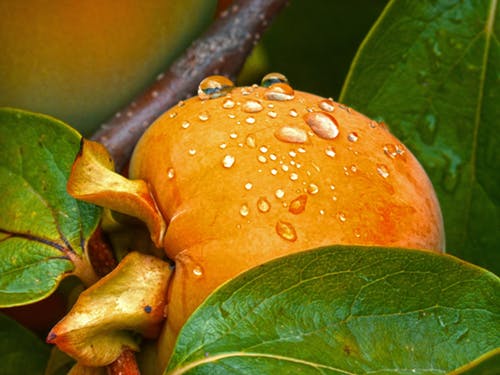
What’s It Like?
A delicious orange coloured fruit of which there are two main varieties, a soft one (you have to wait for them to become very soft and “sloppy” before you eat them, or they leave a floury texture in your mouth!) for this variety you just eat the inside and not the skin and the second variety is a firm one which remains crisp and crunchy almost the texture of an apple as it ripens and you can eat the skin.
The two taste quite different. The softer ones are sweeter, and more honey flavour and the firmer ones have to me a cinnamon taste.
Nutrition
Persimmons are a good source of fibre and are high in potassium and beta carotene. They also provide vitamin C, vitamin E, vitamin B6, folate, phosphorus, copper, manganese, magnesium and calcium.
Uses
Eat them fresh would be my best recommendation. Add them on top of breakfast cereal or in a fruit salad with yoghurt or ice-cream. When we had an abundance, I would freeze them and use them in making super think smoothies with milk, cinnamon and peanut butter.
2. Figs
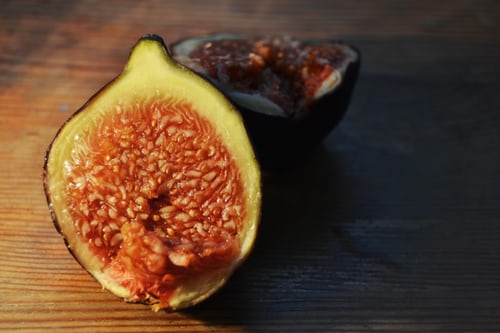
What’s It Like?
Fresh figs are nothing like the dried figs (these are delicious too, just different). They are rich but subtle and have a flavour almost honey like. Look for the very purple and soft ones to know they’re ripe and ready.
I remember my ex-boyfriend’s sister commenting that figs were one of the sexual fruit because the little opening at the top looked like a butt hole and this has stuck with me ever since and when I think of them those old paintings where there’s a gorgeous half naked woman feeding an equally gorgeous man of some nobility from a bunch of grapes, comes to mind every time.
Nutrition
Figs are a good source of fibre. They contain vitamin K, thiamine, vitamin B6, potassium, calcium, manganese and magnesium.
Uses
Definitely one to eat fresh. Smother a piece of toast or French toast with ricotta cheese and top with sliced fig, drizzle with honey and enjoy as a breakfast or snack. We used to store them in egg cartons and make special decadent deliveries of a dozen figs to all our friends and family.
3. Custard Apple

What’s It Like?
The outside skin is green and lumpy and the flesh inside is white and white with an almost pear-like flavour. You know they’re ready to eat when they become soft (often buy them when they’re firm).
Nutrition
Custard apples are a good source of fibre and high in antioxidants, including vitamin C, flavonoids and carotenoids. They also contain vitamin B6, potassium, magnesium and calcium.
Uses
If you have not tried custard apple before you must! I highly recommend scooping and eating fresh out of the skin. When we had excess, I would blend the flesh with yoghurt and eat as a frozen yoghurt dessert with crushed nuts on top.
4. Dragon Fruit

What’s It Like?
In a word delicious.
I love dragon fruit, especially the pink/purple fleshed ones. They are incredibly fragrant, somewhat of a cross between watermelon and kiwifruit in a way that’s hard to describe because it’s also so much more. They have the texture of kiwifruit complete with the small seeds throughout.
Nutrition
Good source of dietary fibre and antioxidants. Also contains magnesium, vitamin C, potassium and iron.
Uses
Slice in half and scoop out of the skin with a spoon. They’re also delicious frozen and remind me of eating snow cones as a kid. Eat on top of cereal or porridge and just enjoy, enjoy, enjoy.
5. Monsteria
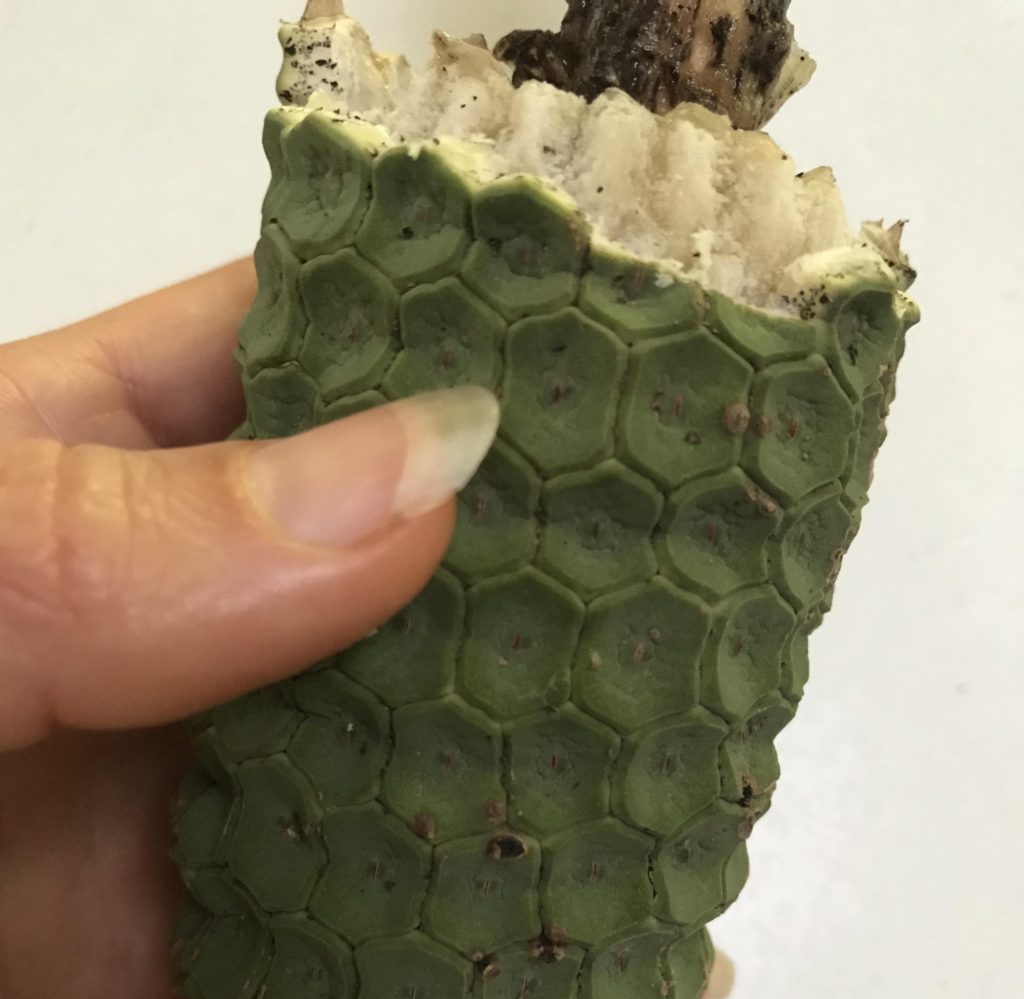
What’s It Like?
This fruit is a really unusual one and most people only know it as a popular houseplant. However, when grown outdoors and allowed to reach its outdoor size it bears fruits which have an outer skin comprised of a tessellation of hexagonal green scale-like segments. These segments fall off as the white fruit underneath ripens.
The fruit is sometimes referred to as fruit salad fruit because it is said to taste like a mix of fruits and I’d agree with this. Perhaps somewhat like a creamy pear cross with banana.
Nutrition
Monsteria is high in dietary fibre. Also contains potassium, thiamin, phosphorus, vitamin c and calcium.
Uses
Eat it raw straight off the stem.
Eat the segments only as the green skin falls off and not below, otherwise you get high levels of calcium oxalate which feels like prickles in your mouth (which we affectionately and accurately referred to as prickle tongue). If you consume too high a level, you may get diarrhoea so it’s a good thing the scales fall off day by day ensuring you can only eat it little by little.
6. Longans

What’s It Like?
They look similar to a lychee but instead of the pink coloured skin have a brown-green coloured skin which peels off to reveal translucent flesh firmer than a lychee and somewhat reminiscent of rockmelon flavour if I had to give a taste they were most like.
Nutrition
Longans are a good source of dietary fibre and also contain vitamin c, potassium, magnesium and phosphorus.
Uses
Peel off the skin as you would a lychee and eat the translucent flesh raw, I think that’s the best way you really could eat longans. If you want to get creative blend them into a juice or use as a topping for coconut sticky rice or as a flavouring for cheesecake.
Take Home Points
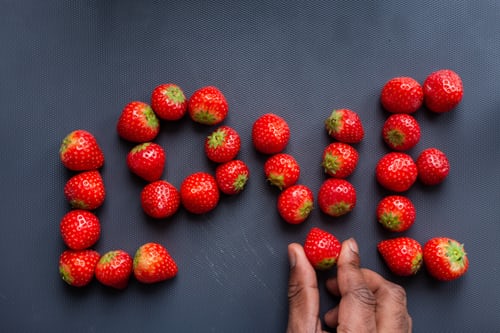
Enjoy fruits!
They are so much more than calories or something you need to avoid because of their sugar or carbohydrate content, they are a source of many crucial vitamins and minerals as well as and more importantly an incredible marvel, enjoyment and connection with nature.
With my whole heart I hope you found this information useful and inspiring.

Become Great. Live Great.
Bonnie.

